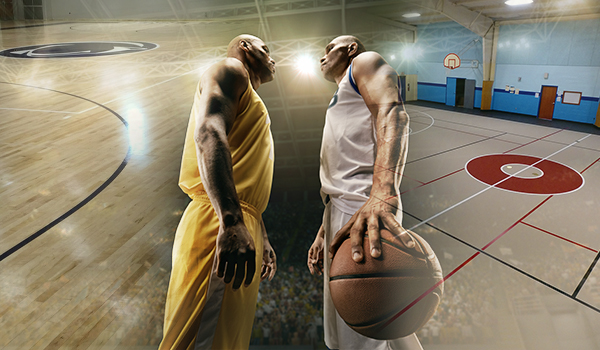
Tradition is a wonderful thing, especially in a sport like basketball. After all, the game’s history is the foundation of the modern era. But when change occurs, like new technology, our response shouldn’t be a reflexive “we’ve never done it that way before!” When we are quick to judge, there is a danger of holding on to traditions for reasons other than usefulness. We need to take a step back and ground our thinking in the facts.
Basketball floors spark debate over tradition more than any other aspect of the game. Some are adamant that only traditional maple hardwoods will do. Others think resilient floors like vinyl or polyurethane are the way of the future. No matter where you fall in this debate, it is important to consider the facts:
Traditional Maple Hardwoods
- are the historical standard for competition in terms of appearance and performance.
- generally offer more shock absorption than resilient floors, but not always.
- have “dead spots,” where the ball just doesn’t bounce the same or there is more or less vertical deformation.
- are area-elastic, which means less uniformity across the whole court.
Resilient Vinyl or Polyurethane Floors
- have uniform ball rebound, shock absorption, and vertical deformation anywhere on the court. No “dead spots.”
- are more versatile and capable of hosting nonsporting events.
- have less shock absorption in general, but not always.
- can mimic the appearance of tradition hardwood.
These are just a few of the factors to consider. If you would like more help comparing hardwoods and resilient floors, contact Abacus.
